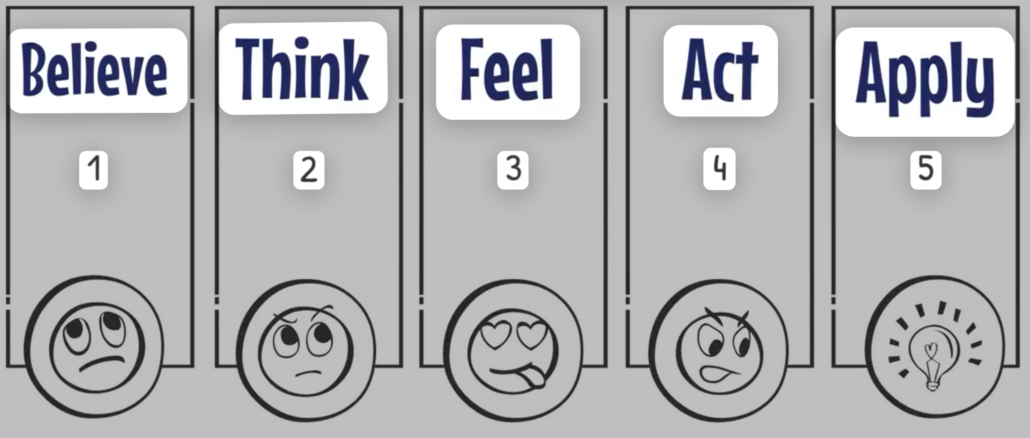
Change.
It sounds so simple, yet why does it often provoke such resistance?
Perhaps you’ve experienced this yourself: you try to influence behavior, but instead of progress, you encounter pushback—or even complete stagnation. What’s going on?
Here’s the core insight: real change doesn’t start with behavior—it starts in the brain, in the beliefs that drive everything. Attempting to change behavior without addressing those deeply rooted beliefs can feel like an attack on autonomy for many people, triggering resistance. But what if you could overcome this by using the brain itself as an ally?
Think about how beliefs work. What someone believes shapes their thoughts. Those thoughts, in turn, fuel emotions, and those emotions drive actions.
This is the essence of the BTFA™ model: believe, think, feel, act.
Without addressing beliefs, change remains superficial. Worse, trying to steer behavior directly often backfires. The brain feels pressured and shifts into defense mode—resistance, avoidance, or even complete disengagement. And that’s the challenge: how do you break this cycle?
When change provokes resistance, it’s rarely due to a lack of willpower. The brain seeks safety. Only when it feels secure can it create space for new beliefs and growth.
Imagine this: a team member is consistently overwhelmed by deadlines. You could say, “Just try to work more efficiently,” but what would that change? Likely nothing. However, if you explore the stress together and uncover a belief like, “I’m not good enough if I fail,” you create room for transformation.
Want real change? Start by creating an environment where beliefs can shift. Here are four ways to apply the BTFA™ model:
By using the BTFA™ model, you’re not just coaching behavior—you’re transforming lives at their core.
Ready to make lasting change? Start by partnering with the brain, not working against it. Klik here
We constantly add content to the site, so please check our on-line shop and look at the full range of games, ebooks and kits. Or read some of the other blog posts written by our team of international coaches.
Please note – Please include a reference and link back to this original blog if you wish to copy or share anything we have written: (cc) MyCoachingToolkit.com – 2023